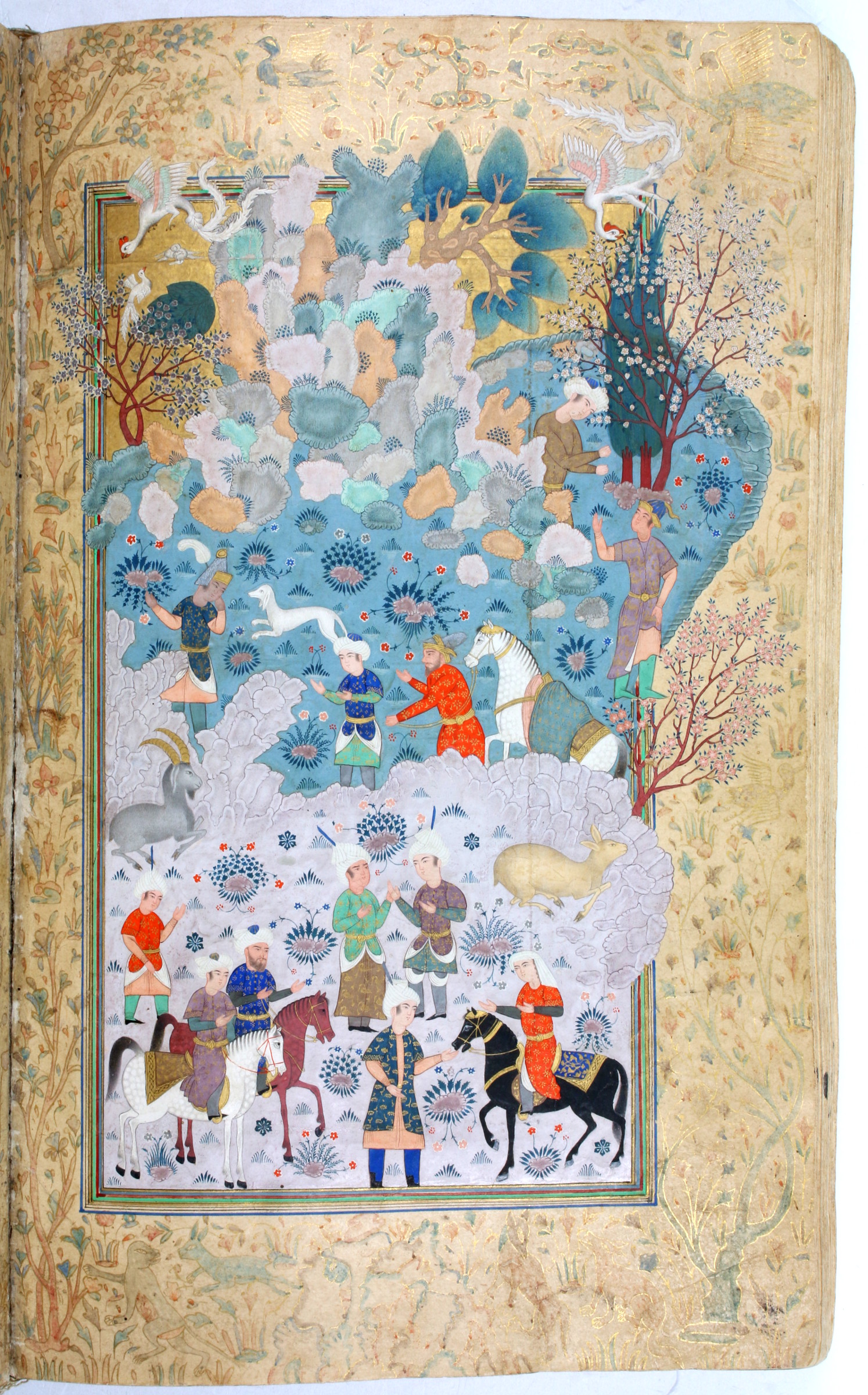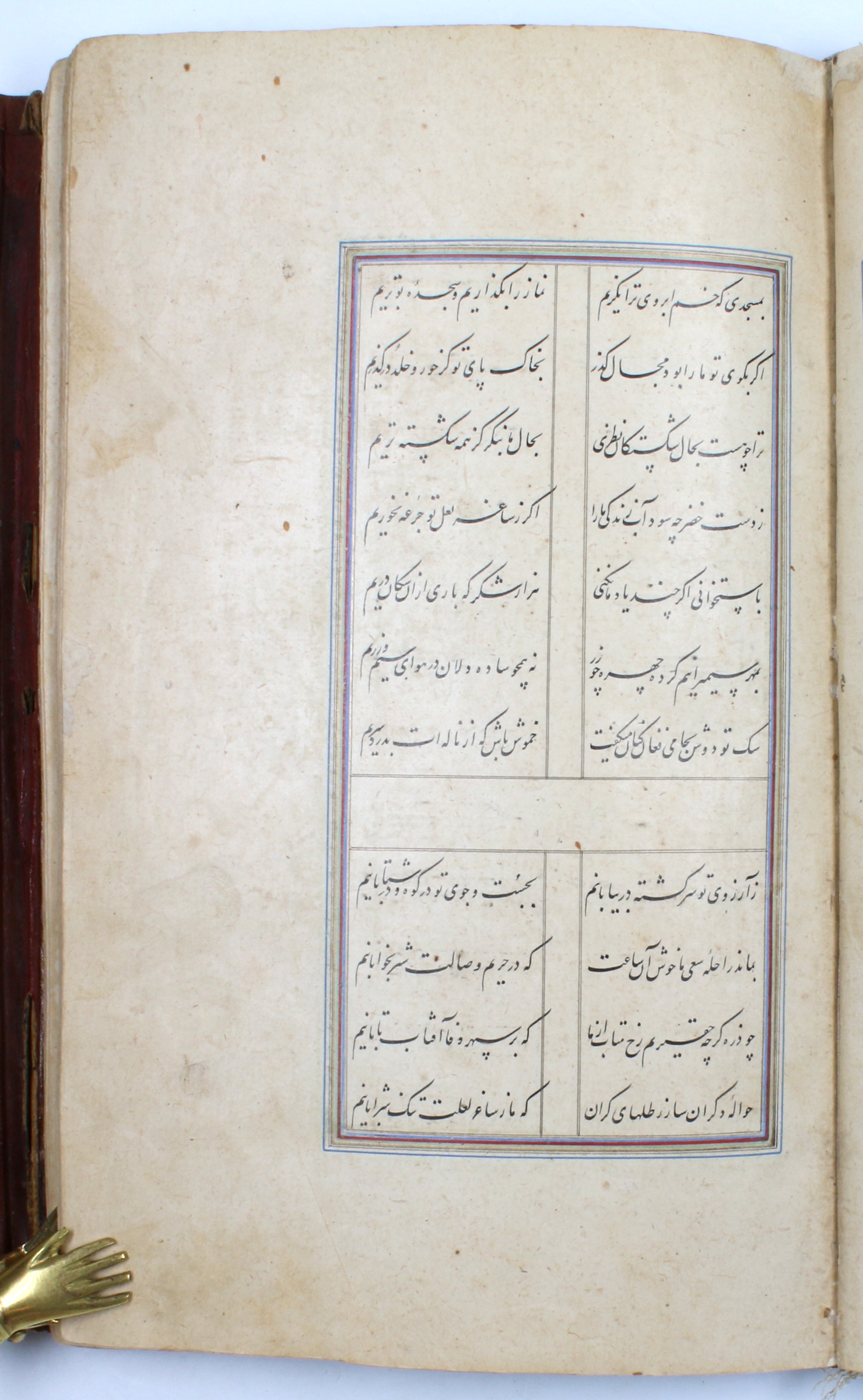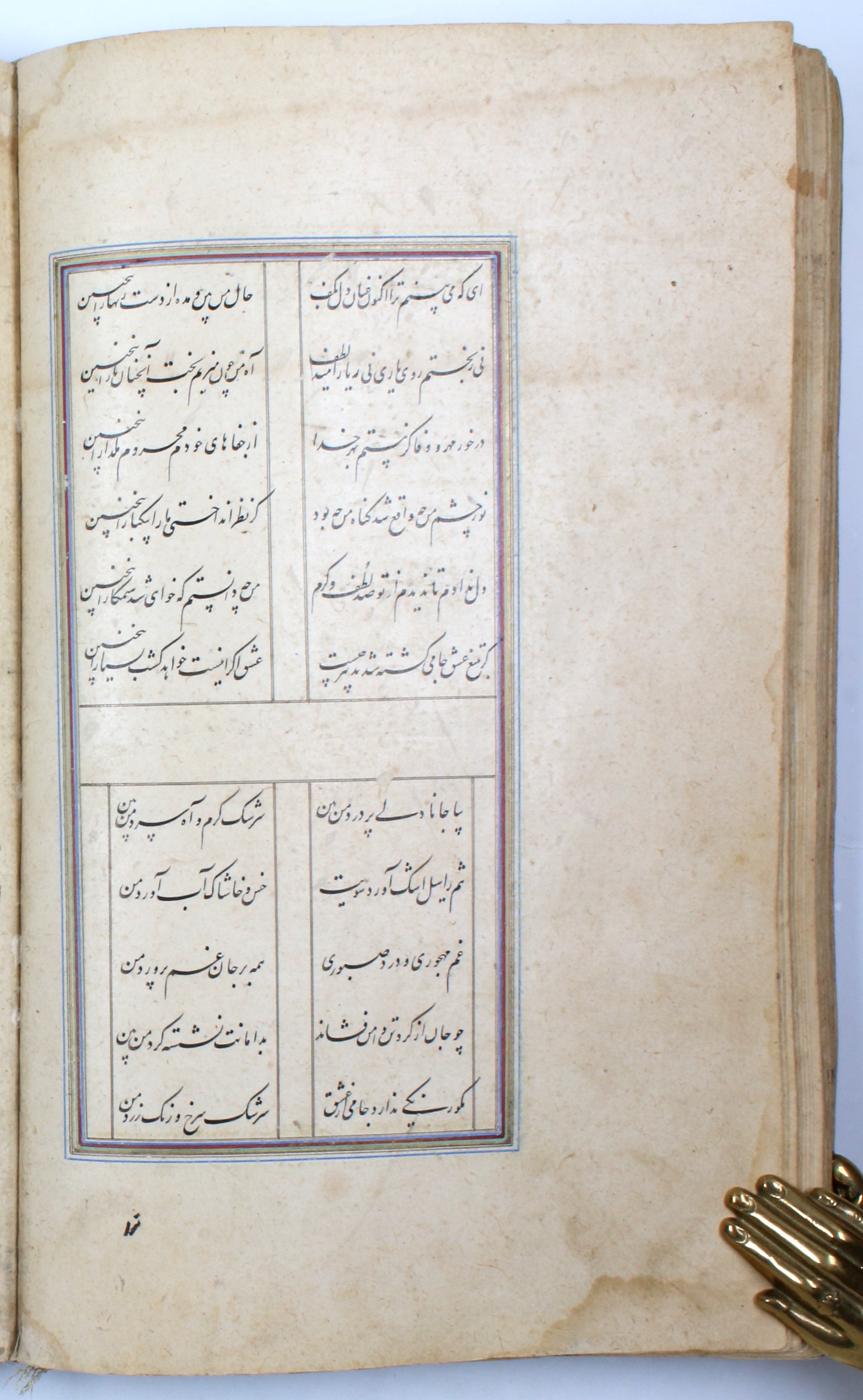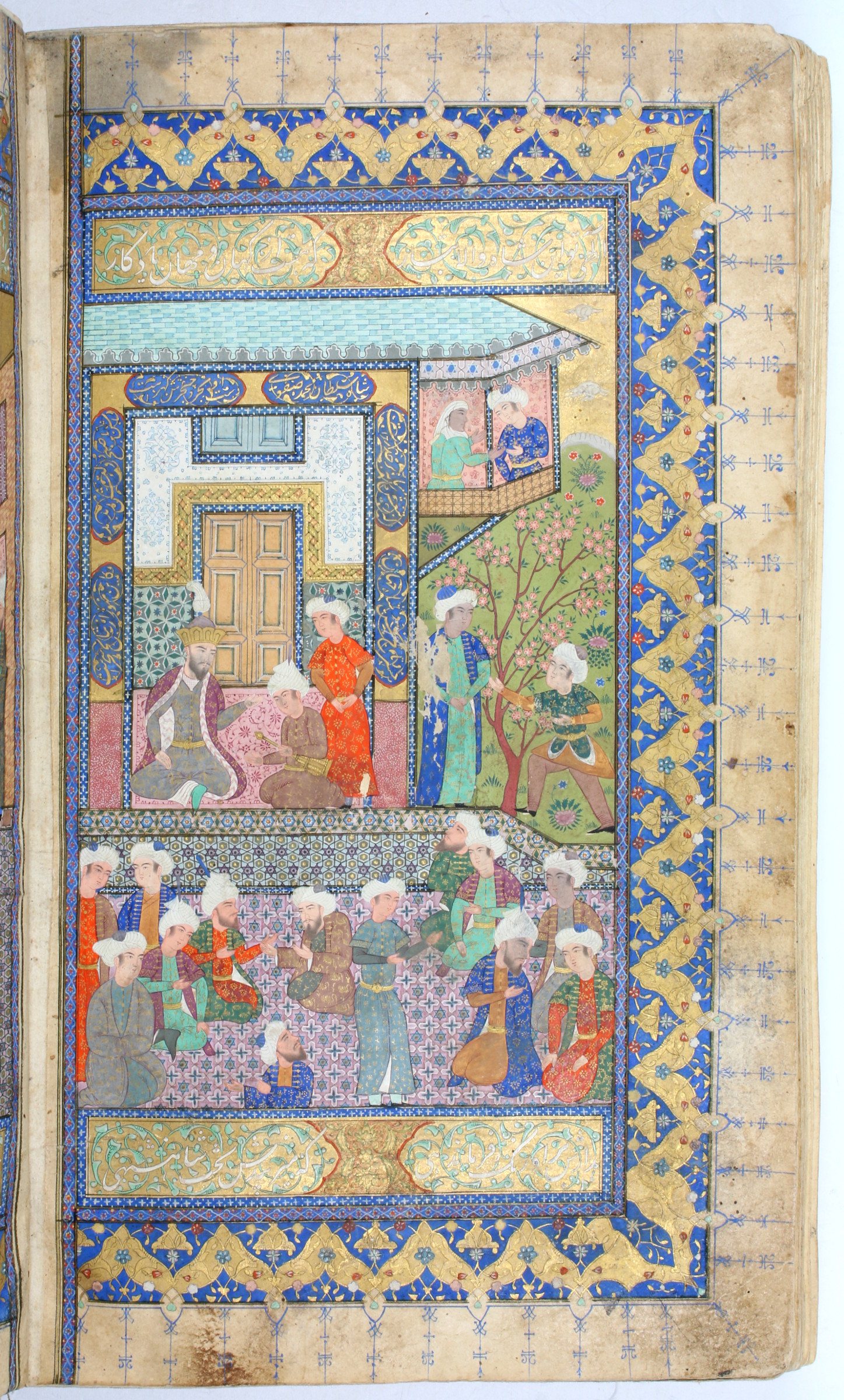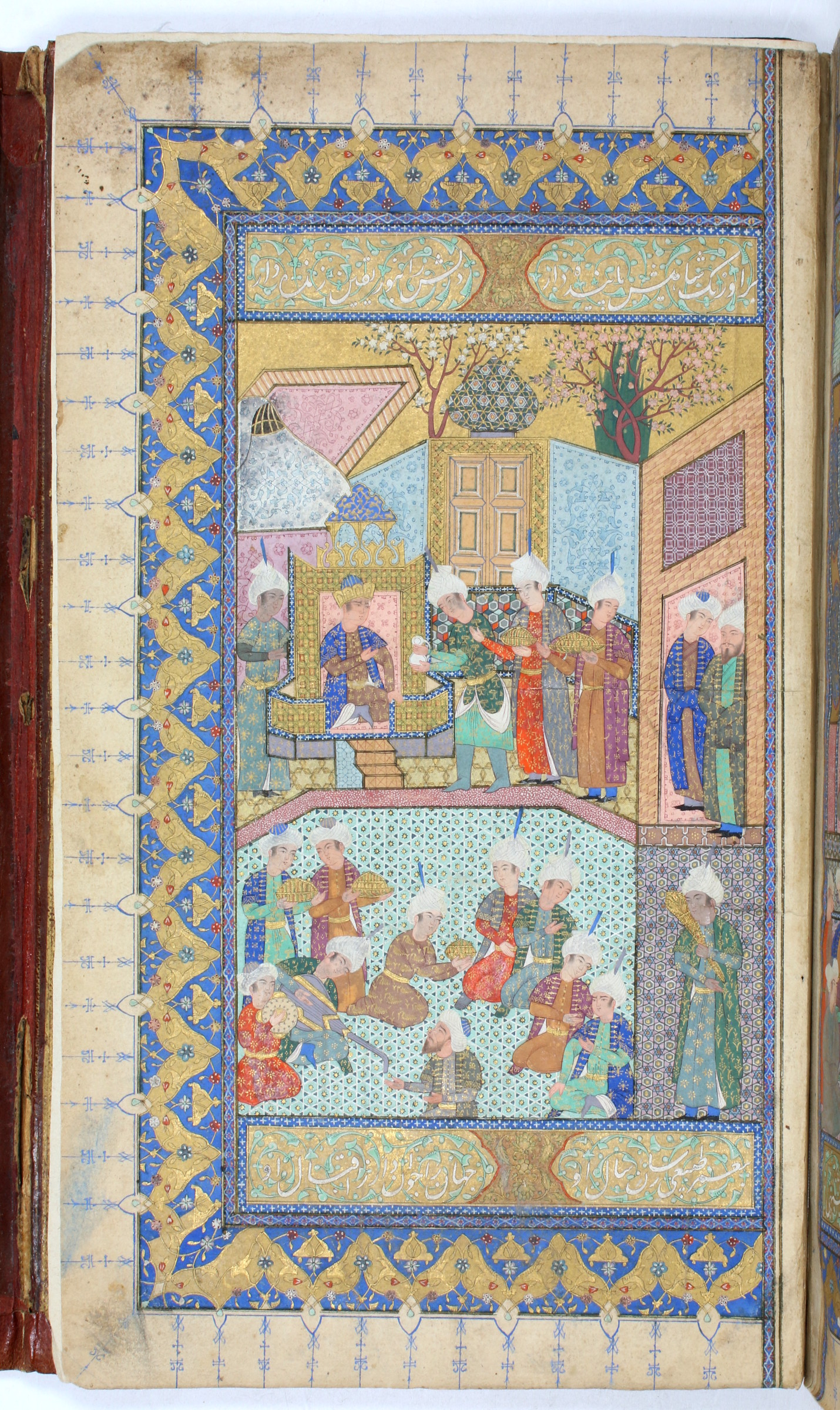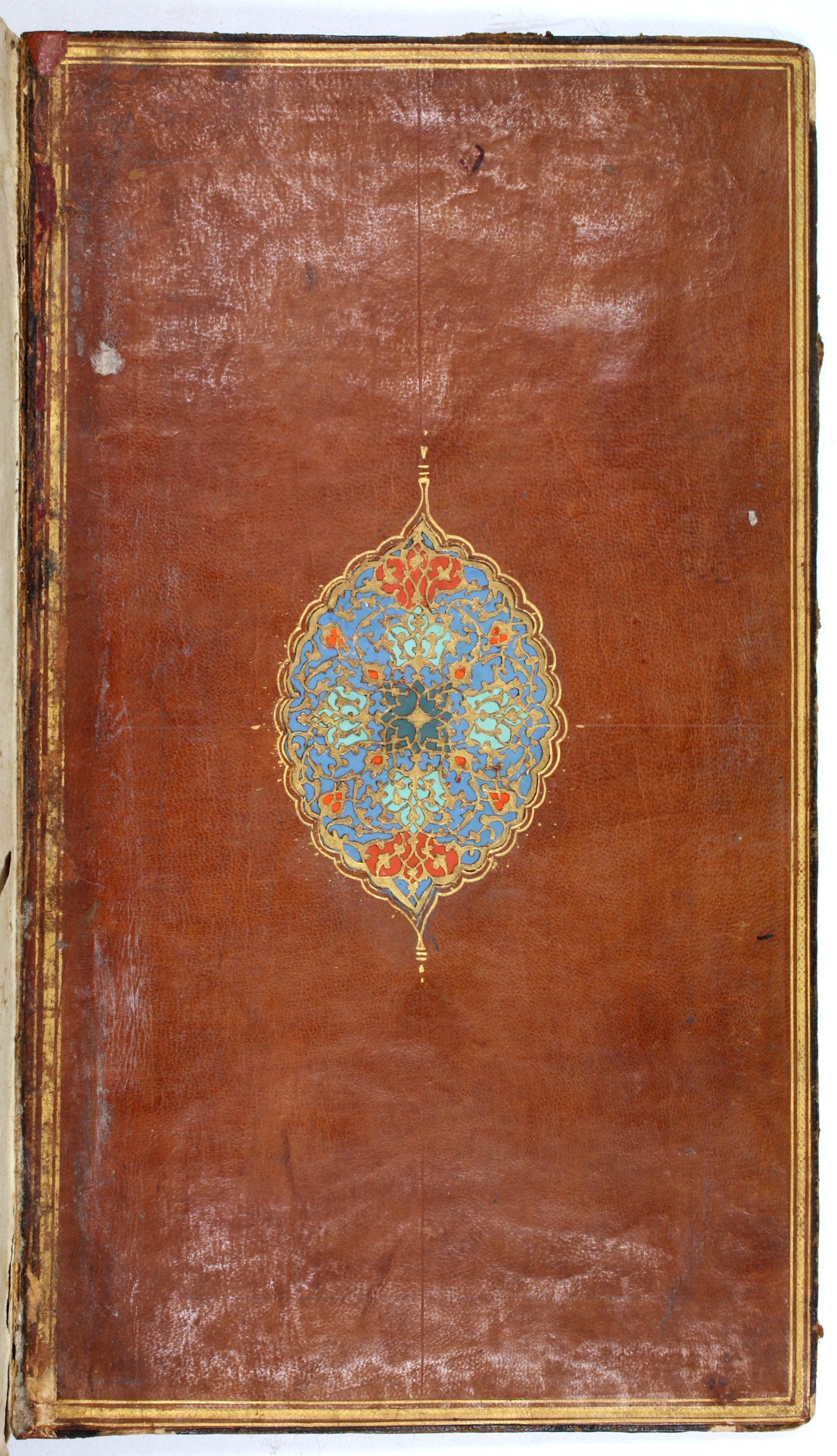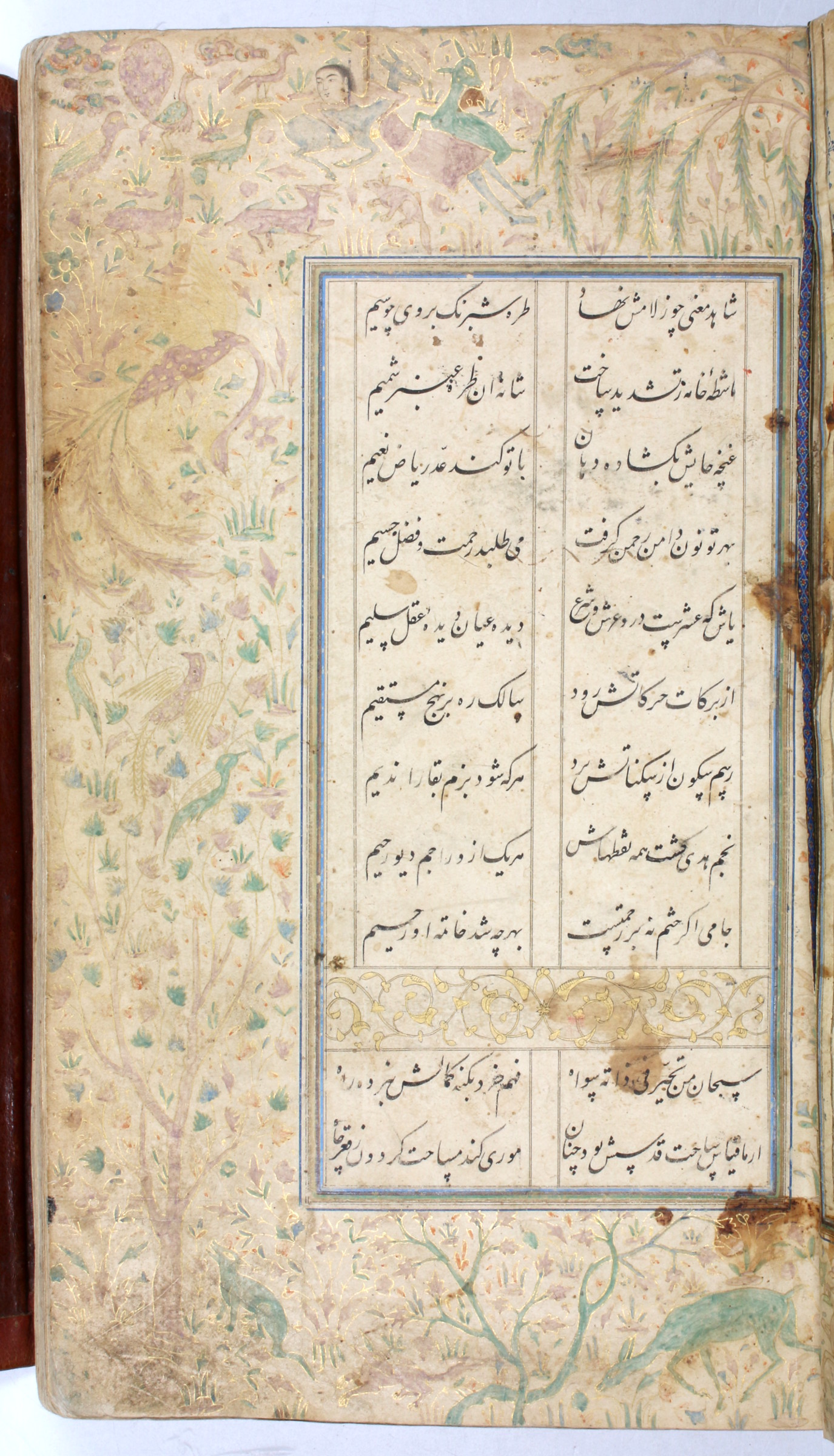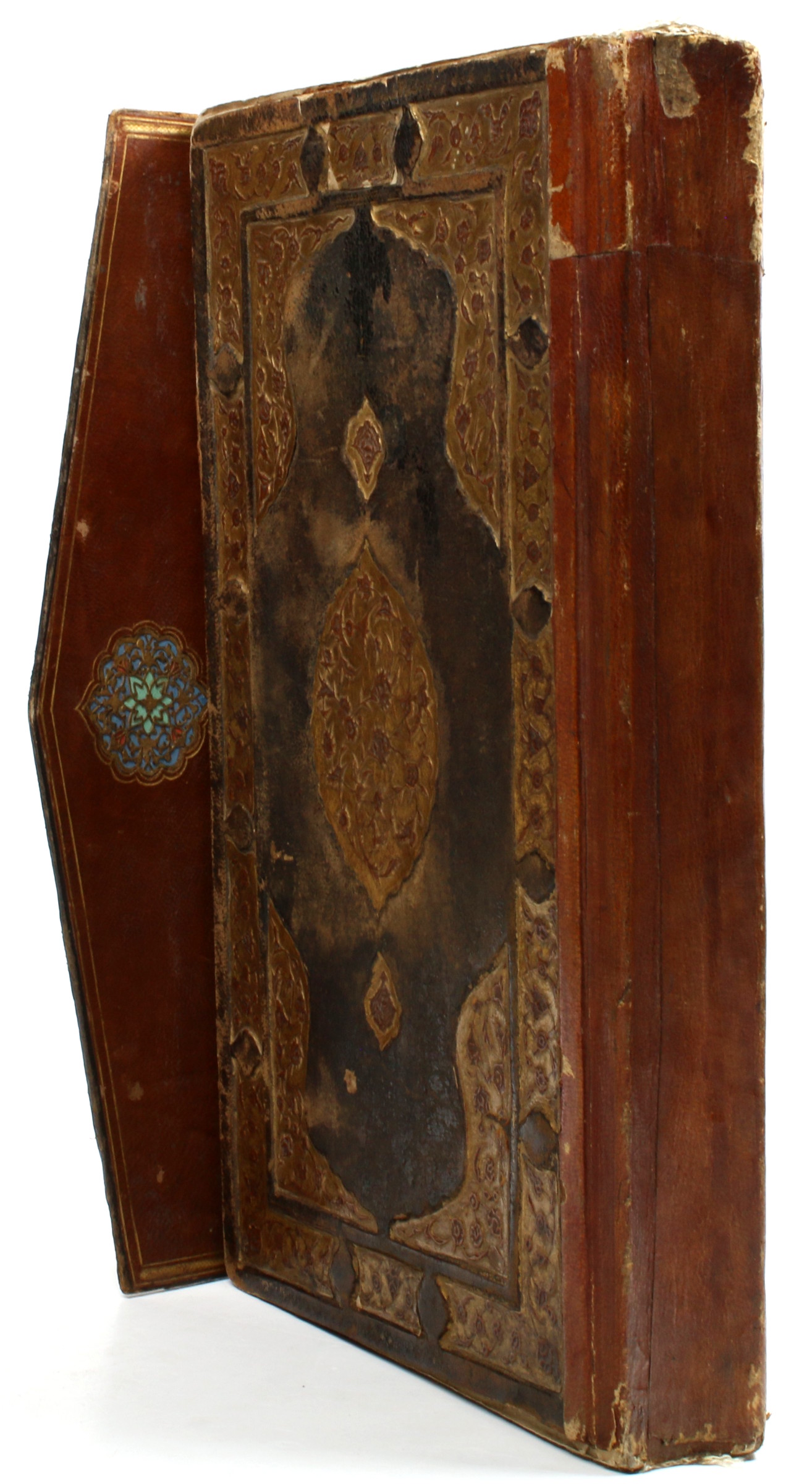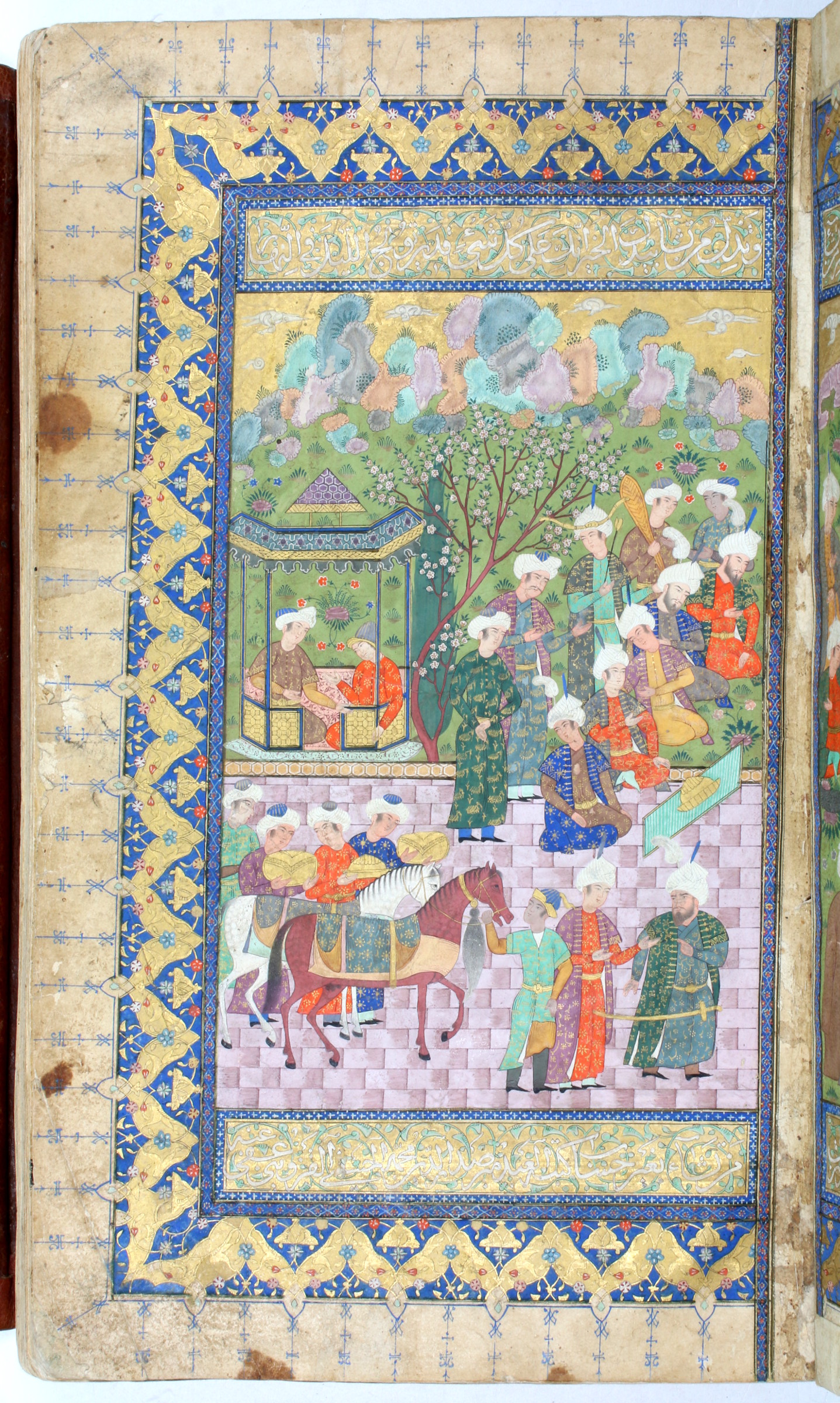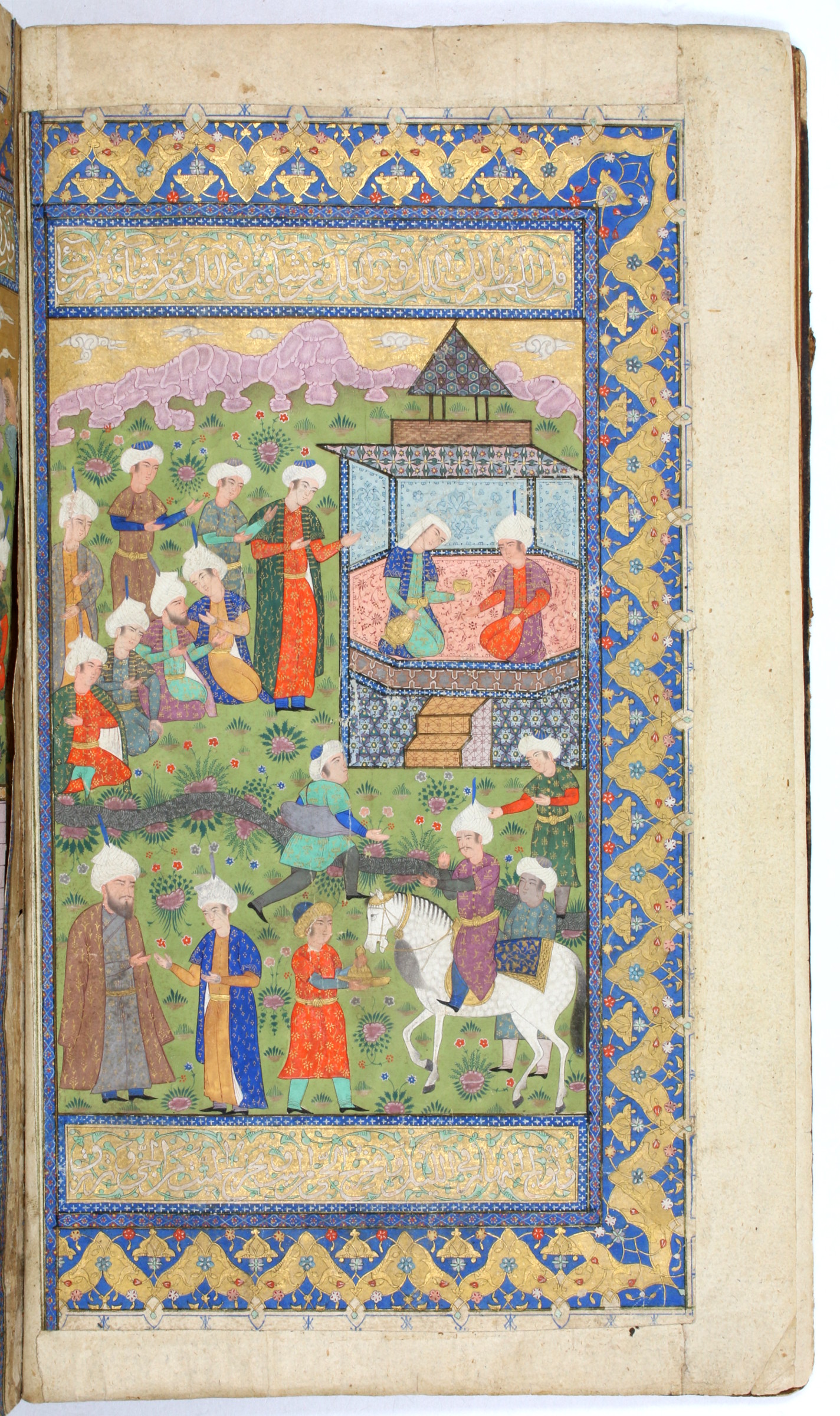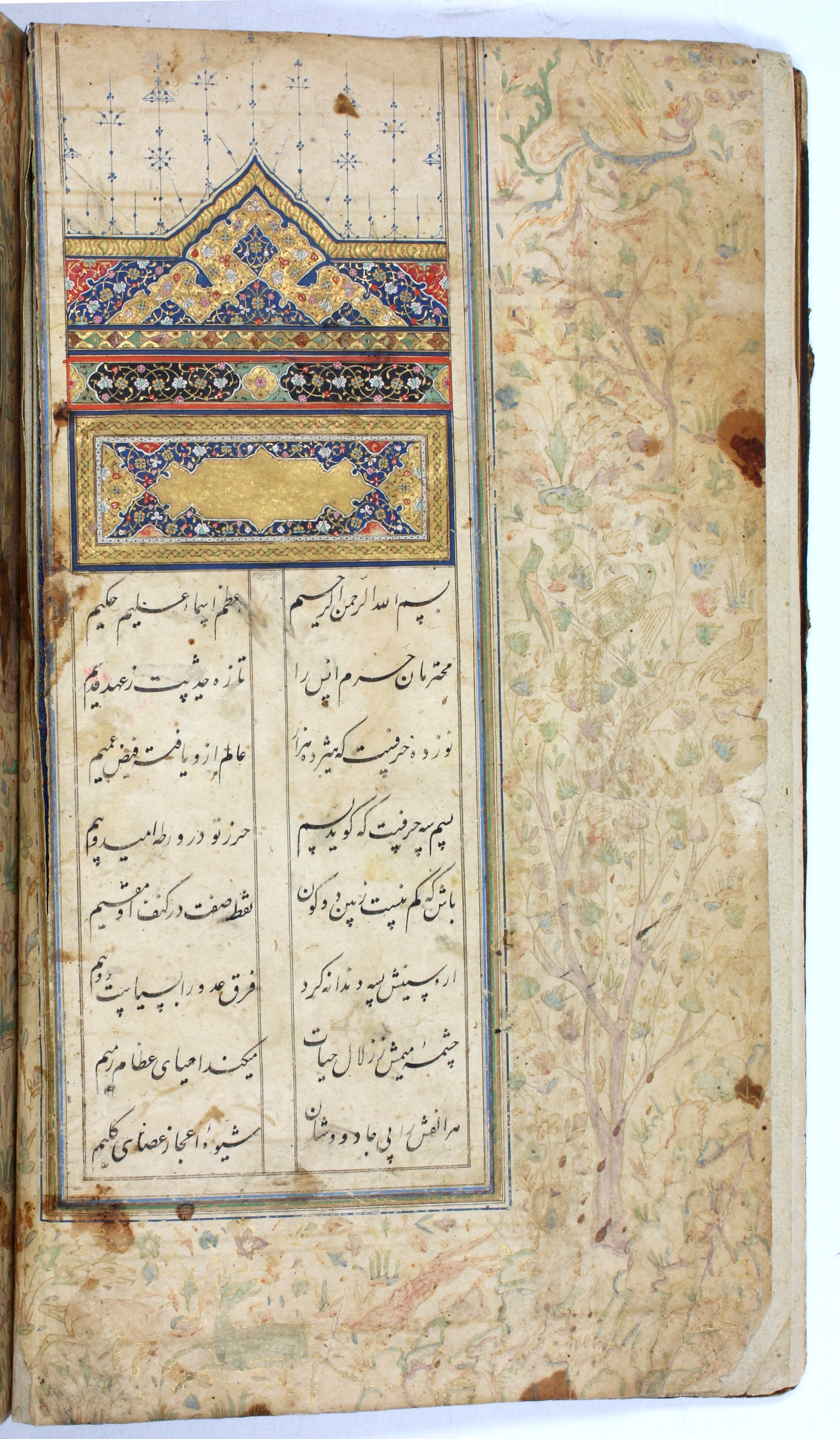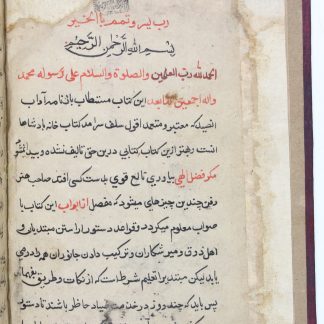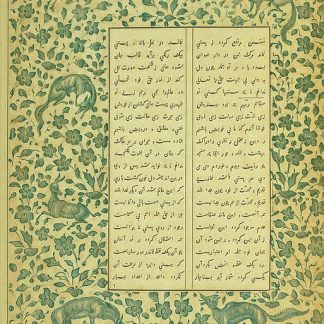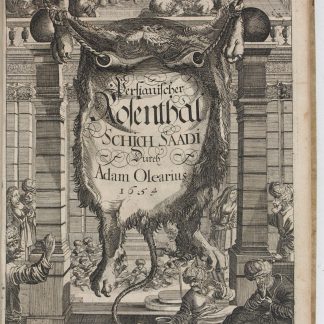One of the earliest manuscripts from the hand of Muhammad ibn Mulla Mir
Diwan-i Jami.
Small folio (185 x 290 mm). Persian manuscript on polished paper. 221 ff. (lacking 7 ff.). 12 lines of black nasta'liq, written in two columns, set in blue, green, red, and gilt borders. With 5 full-page miniatures, marginal floral and Safavid style bestiary decorations on the first pages and middle miniature pages, a central blue rosette (shamse) in the middle written with gilt. Bound in full brown morocco with a fore-edge flap, covers and flap decorated with a central mandorla and spandrels in gilt, the interior of both covers and flap decorated with filigree in blue, red, and gilt.
€ 175,000.00
Very early, stunningly illuminated manuscript of Jami's Diwan, one of the earliest documented works of the renowned calligrapher Muhammad ibn Mulla Mir (Al-Husaini Al-Ustadi).
This splendid manuscript, written in an elegant nasta'liq script, includes five ornate miniatures by two different artists: four may have been added by later hands, but the earliest illustration, along with its beautiful marginal decorations, appears to be in the hand of the scribe Ibn Mulla Mir himself. The colophon states the finishing date in numerals and script as Rajab 998 (May/June 1590) and bears the distinctive signature of the calligrapher.
As one of the most celebrated scholars and poets of 15th century Persian literature, Jami is a canonical name that influenced mystics and poets of the Islamic world for centuries. He grew up in Jam, a small village in Herat, and started to use his pen-name Jami as a tribute to his hometown. In his youth, his studies at Nizamiyyah University included philosophy, mathematics, the natural sciences, literature, and the Arabic language. Well-educated and well-travelled, Jami taught in Samarkand, held an important position at the Timurid court, and befriended and mentored the Turkish poet Alishir Nevai, considered the greatest representative of Chagatai literature. Celebrated during his lifetime in the Islamic world; Jami received many invitations from various sultans who desired to have him at their courts, but he rejected them. Thirty-six of his works, ranging from Islamic studies to poetry, have survived to the present day. This manuscript is his well-celebrated Diwan, mostly composed of ghazals, qasides, and quatrains.
This beautifully crafted manuscript is thought to be one of the earliest works of the calligrapher, Muhammad ibn Mulla Mir. Although his works listed in Mehdi Bayani's catalogue range from 1010 to 1038 AH (1602-28 CE), his earliest known manuscript, a copy of Jami's "Salaman and Absal", dates back to 989 (1581) and is held in the collections of National Library of Russia (PNS 145). Another well-known manuscript copied by this scribe is held in the Metropolitan Museum of Art (MS 13.228.16). He is known usually to sign his manuscripts as "Mohammad ibn Mulla Mir Al-Husayni Al-Ustadi", indicating his lineage and probably the fact that his father was also a scribe, but Bayani also records an example in which he signed his name as he did in the present manuscript.
UK private collection.
Small paper tears, dampstaining, occasional colour fading in the margins, paper rubbed on some pages, occasional stains, ink smudges and browning. A single marginal paper repair, not affecting the text. 2 poems written in the margins of two pages by a different hand. 7 leaves appear to be missing. Binding rubbed, spine and flap professionally repaired.
Mahdi Bayani, "Ahwal va-Attar-e Khoshnevisan", vol. 3 (Tehran, 1343/1984), pp. 840f. Olga Vasileva & Olga Yastrebova, "'Abd al-Rahman Jami, Poet, Scholar and Mystic" (St Petersburg, National Library of Russia, 2017), p. 87.

